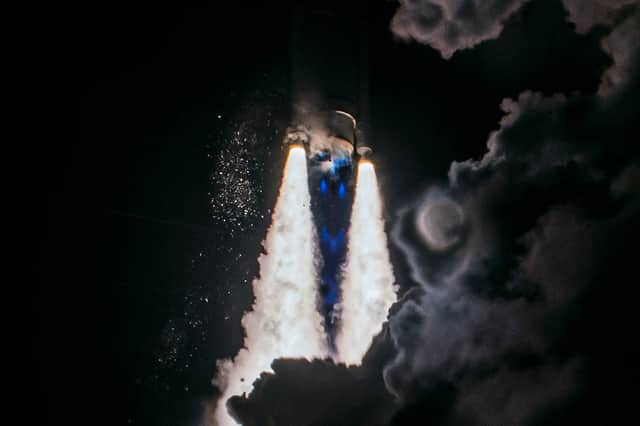Peregrine lander: will Moon spacecraft crash back to Earth today, where will it land, time - is it dangerous?


Just last week, the launch of the Peregrine moon lander was being hailed as a successful and historic step towards establishing a human presence on the Moon.
The launch of the Vulcan rocket carrying the craft from Florida's Cape Canaveral seemed to go smoothly, and the lander itself, carrying a payload focused on getting ready for future human habitation on the moon (and the DNA of well-known British science fiction author Arthur C. Clarke), was on its way.
Advertisement
Hide AdAdvertisement
Hide AdBut Peregrine Mission One (PM1), built by US space company Astrobotic, encountered a fuel leak shortly after launch, scuppering any hope of a soft lunar landing.
On Friday (12 January) it was thought that the spacecraft had less than two days of fuel left, but in an update, Astrobotic said “the rate of leak had slowed more than anticipated” and estimated that Peregrine had about 52 hours of propellant remaining.
Now, the company has said that the spacecraft is "on a path towards Earth", and that it would "likely" burn up on re-entry in its most recent update. But should we be worried about the crash landing of the 1.2-tonne probe – about the size of a garden shed? Here is everything you need to know.
What will happen?
Earlier this week, Astrobotic wrote on X: "Our latest assessment now shows the spacecraft is on a path towards Earth, where it will likely burn up in the Earth’s atmosphere."
Advertisement
Hide AdAdvertisement
Hide Ad“We have been evaluating how best to safely end the spacecraft’s mission to protect satellites in Earth orbit as well as ensure we do not create debris in cislunar space,” the company said in a blog post on Monday (15 January).
Astrobotic said it was collaborating with NASA and the US government to assess the vehicle's controlled re-entry path. “We do not believe Peregrine’s re-entry poses safety risks, and the spacecraft will burn up in Earth’s atmosphere,” the firm said.
When and where will it crash?
Now, the company has said safe re-entry to Earth “is our top priority”, with a controlled crash planned over a remote area of the South Pacific on Thursday (18 January) at 9pm UK time.
As it enters the Earth’s atmosphere, Peregrine will hit air molecules at about 17,000mph and mostly burn up and disintegrate. Any leftover debris will end up in the Pacific ocean.
Advertisement
Hide AdAdvertisement
Hide AdIt means that rather than floating around as space junk and being a crash hazard for other spacecraft and space objects, Peregrine will be safely disposed of.
Was the mission a failure?
Despite the craft not making it to its intended destination of the Moon, the mission has not been a complete waste of time.
UK scientists who helped develop a key piece of technology for the private Moon launch said their sensor and electronics are performing well, despite the mission not going as planned.
Dr Simeon Barber, of The Open University, helped develop the sensor – called the Exospheric Mass Spectrometer – on an onboard instrument known as the PITMS (Peregrine Ion Trap Mass Spectrometer).
Advertisement
Hide AdAdvertisement
Hide AdPITMS was designed to explore the Moon’s atmosphere by measuring water and other molecules, and was developed in the UK with £14m of Government funding through the UK’s membership of the European Space Agency.
The data collected was hoped to contribute to our understanding of the Moon’s potential to provide resources such as water, opening new possibilities for future human presence on the lunar surface.
But despite not landing on the Moon, the sensor is still working as planned, and Dr Barber and his colleagues are working around the clock to gather data from the Peregrine spacecraft before it loses power and starts tumbling.
Meanwhile, Nasa has also confirmed that all its onboard instruments have received power and are making measurements.
Advertisement
Hide AdAdvertisement
Hide AdJoel Kearns, deputy associate administrator for exploration with Nasa’s Science Mission Directorate at Nasa Headquarters in Washington, said that measurements from those instruments “will provide valuable experience, technical knowledge and scientific data” for future lunar missions.
Comment Guidelines
National World encourages reader discussion on our stories. User feedback, insights and back-and-forth exchanges add a rich layer of context to reporting. Please review our Community Guidelines before commenting.
